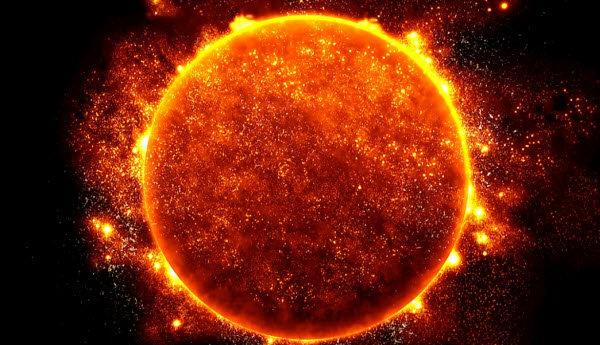Since the dawn of creation, the Sun has been regarded as the fundamental source of life for humans. Ancient cultures worshipped it as a deity, reflecting its importance. Over time, advancements in science and technology have allowed humanity to explore many of the mysteries of our surrounding space. Naturally, the Sun has received significant attention, revealing that it is the center of our solar system, around which all planets, including Earth, orbit. Additionally, the Sun is one of billions of stars scattered across the vast universe. It is characterized by possessing vast amounts of energy that will eventually be exhausted. Fortunately, most scientists agree that the Sun will not die for approximately five billion years—a span too long for any of us to witness. This has sparked considerable curiosity about what will happen to the Sun when it eventually dies.
A research team from the University of Manchester has addressed this critical question in their recent report. They suggest that over time, the Sun’s hydrogen fusion in its core will diminish, leading to an imbalance in its hydrostatic equilibrium. This will result in an increase in the core’s temperature and density. When the Sun burns through its remaining hydrogen, it will transition from its current state to a red giant. It will then begin to expand and grow, ultimately destroying Earth in the process. Although this scenario is grim, the good news is that humanity will not be around to witness it, as Earth will become uninhabitable long before that time. Once the red giant reaches approximately 250 times its current size, it will explode, leaving behind a glowing ring of gas and dust—a phenomenon known as a planetary nebula.

Researchers assert that this is the natural outcome for the death of any star. About 90% of stars in the universe meet their end this way once their fuel is depleted. While there is uncertainty about whether the Sun has enough mass to achieve this, it is believed that it does. The planetary nebula will remain visible for about 10,000 years as it drifts through space.

Professor Albert Zeigslura from the University of Manchester explains the details of what happens when a star dies. He notes that when a star dies, it ejects a mass of gas and dust known as the envelope, which can be up to half of the star’s mass. This process reveals the core, which eventually ceases to function. The extremely hot envelope causes the expelled material to shine brightly for around 10,000 years. Although this is a short period in astronomical terms, it makes the planetary nebula visible and bright, detectable from vast distances of tens of millions of light-years. By this time, the star itself will have dimmed to the point of being invisible.
This study is considered one of the most precise and groundbreaking scientific achievements. It employed revolutionary methods, including the use of a specialized supercomputer, to analyze data collected from various sources, such as stellar life cycles. The research team analyzed this data to understand the amount of gas and dust ejected by stars at the end of their lives and how these stars appear during their final moments. This research provides valuable insight into what will happen to the Sun when it reaches the end of its life.
